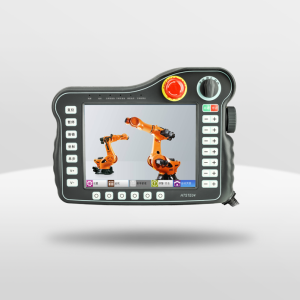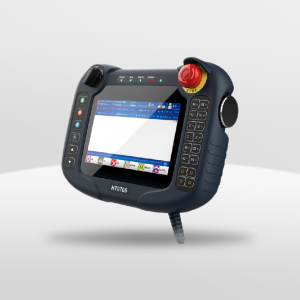
As a copywriter, I have delved into the fascinating world of robotic teach pendants and discovered that these devices play a crucial role in controlling industrial robots. A robotic teach pendant is essentially a handheld device that allows operators to program, control, and monitor the movements of robots. However, what intrigued me even more was how the standards for these teach pendants vary across different countries.
Subheading: Comparing Robotic Teach Pendant Standards
In my research, I found that while there are similarities in the basic functionalities of robotic teach pendants worldwide, there are significant differences when it comes to standards. For instance, in Japan – known for its advanced robotics industry – their teach pendant standards focus on ergonomics and user-friendly interfaces. On the other hand, European countries prioritize safety features such as emergency stop buttons and protective covers.
American standards tend to emphasize compatibility with various robot models and brands. This means that an operator can use one teach pendant to control multiple robots from different manufacturers without any compatibility issues. In contrast, Chinese standards often prioritize cost-effectiveness by offering simplified versions of teach pendants with fewer features but at lower prices.
Subheading: Comparing Automated Control Systems

While automated control systems may seem similar to robotic teach pendants at first glance, they serve distinct purposes within industrial settings. Unlike a handheld device like a teach pendant which provides direct manual control over robot movements during programming or troubleshooting tasks; automated control systems are designed for continuous operation without human intervention once programmed.
The key difference lies in their level of autonomy – where robotic teach pendants require constant input from operators; automated control systems operate independently based on pre-programmed instructions or sensor inputs. These systems often integrate complex algorithms and artificial intelligence to optimize efficiency and productivity.
Subheading: Comparing Lavichip
In my exploration of robotic teach pendants, I also came across a fascinating technology called lavichip. Unlike traditional teach pendants that rely on physical buttons and switches, lavichip utilizes touch-sensitive surfaces with haptic feedback. This innovative approach allows operators to interact with the robot intuitively through gestures and touch, enhancing user experience and reducing the learning curve associated with traditional teach pendant interfaces.
Lavichip is gaining popularity in countries like Germany where precision control is crucial for industries such as automotive manufacturing. However, it is important to note that while Lavichip offers exciting advancements in human-robot interaction, its adoption may be limited due to higher costs compared to conventional teach pendants.
Conclusion
In conclusion, the standards for robotic teach pendants vary significantly across different countries. From Japan’s focus on ergonomics to Europe’s emphasis on safety features and America’s compatibility-driven approach – each country has its own priorities when it comes to these essential industrial tools. Additionally, automated control systems provide an alternative solution for continuous operation without direct manual input from operators. Lastly, emerging technologies like Lavichip offer new possibilities in human-robot interaction but come with their own set of considerations such as cost-effectiveness.
Understanding these differences can help us appreciate the diverse approaches taken by various countries towards optimizing industrial processes through robotics technology.
